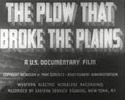5. Posters and Propaganda Between the Wars









more images below
In between the wars businessmen and politicians recognized the importance of the citizen-consumer and sought to influence the behavior of this large population.
After the stock market crash in 1929, businesses felt pressure to promote their goods more aggressively to make up for poor sales. Marketers developed new approaches to advertising and invented the concept of marketing research. Some tactics earned the advertising profession a reputation for preying on consumers already struggling to get by.
“Under the pressures of modern business development, the consumer is becoming confused and illiterate as a buyer more rapidly than the combined positive factors of education, standardization, and so on are succeeding in making him a literate buyer.”
— from a 1934 article, “When the Consumer Becomes a 'Problem,'” by Robert S. Lynd. Lynd was a sociologist and co-author with Helen Merrell Lynd, of Middletown. 14Consumers complained of poor business practices including mislabeled products and shady marketing claims. They mobilized to bring attention to the plight of the consumer and to the obstacles presented by low wages and high prices. In 1936, one grass-roots movement formed the Consumers Union to protect consumers' rights and to be “owned and controlled by organized consumers.” 15
At the same time, Franklin D. Roosevelt recognized the usefulness of adopting both marketing and consumers' language for political ends.
Once elected President, FDR used popular media to reassure an anxious public and promote economic stability, and borrowed techniques of the advertising profession to publicize his New Deal programs. In addition to radio technology, made famous by Roosevelt's comforting fireside chats, many New Deal programs had their own logos, films and publicity campaigns.
“National advertising had been educating us for prosperity...now its great and necessary powers should be applied to government. Help us to interest people in the machinery and production of government.”
— Governor Franklin D. Roosevelt addressing the New York chapter of the Advertising Federation of America in 1931. 16N.W. Ayer art director, Charles Coiner designed the National Recovery Administration's goodwill trademark, the Blue Eagle. Businesses displaying the logo signaled their adherence to policies intended to create employment and increase consumer purchasing power.
In 1936, The Plow that Broke the Plains was the first film produced by the United States Government for commercial distribution and “the most widely publicized attempt by the federal government to communicate to its entire citizenry through a motion picture.” The film sought to explain and justify New Deal programs like the Farm Security Administration (FSA), which aided farming families devastated by natural disaster. 17
The FSA publicity department amassed more than 80,000 photographs in the 1930s from photographers like Dorothea Lange, Walker Evans, Ben Shahn, Russell Lee, Gordon Parks and Jack Delano. Newspapers and popular magazines published the photographs, which continue to serve as evidence of an unprecedented government marketing and image-making effort.
Posters and films in this section reflect changes and trends in the visual environment and advertising of the 1920s and 30s. Poster art shifted from decorative illustration used during WWI to more realistic images, especially photographs. Rational “reason-why” text shortened and offered less instruction and explanation in favor of more generic messages and friendlier slogans.
Some posters of this time period contain transitional elements, like shorter text paired with an older-style illustration, or modern use of photography paired with lengthier text. A George Gallup poll of 40,000 newspaper readers in the 1930s revealed that “pages with pictures” commanded greater reader attention. 18
Image Gallery |
Next Section










